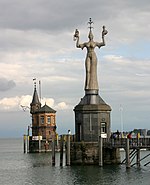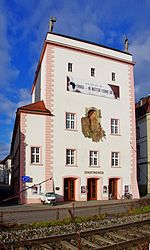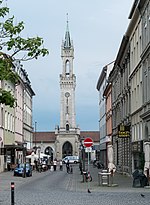Konstanz
BadenFormer states and territories of Baden-WürttembergFree imperial citiesGermany–Switzerland border crossingsKonstanz (district) ... and 6 more
Pages including recorded pronunciationsPages with Alemannic German IPAPages with German IPAPopulated places on Lake ConstancePopulated places on the RhineTowns in Baden-Württemberg

Konstanz ( KON-stənts, US also KAWN-stahnts, German: [ˈkɔnstants] , locally [ˈkɔnʃtants] , Alemannic German: [ˈkoʃd̥əts, ˈxoʃd̥əts]), also known as Constance in English, is a university city with approximately 83,000 inhabitants located at the western end of Lake Constance in the south of Germany. The city houses the University of Konstanz and was the residence of the Roman Catholic Diocese of Konstanz for more than 1,200 years.
Excerpt from the Wikipedia article Konstanz (License: CC BY-SA 3.0, Authors, Images).Konstanz
Seestraße, Verwaltungsgemeinschaft Konstanz
Geographical coordinates (GPS) Address Nearby Places Show on map
Geographical coordinates (GPS)
| Latitude | Longitude |
|---|---|
| N 47.666666666667 ° | E 9.1833333333333 ° |
Address
Seestraße 13a
78464 Verwaltungsgemeinschaft Konstanz, Konstanz-Petershausen-Ost
Baden-Württemberg, Germany
Open on Google Maps









